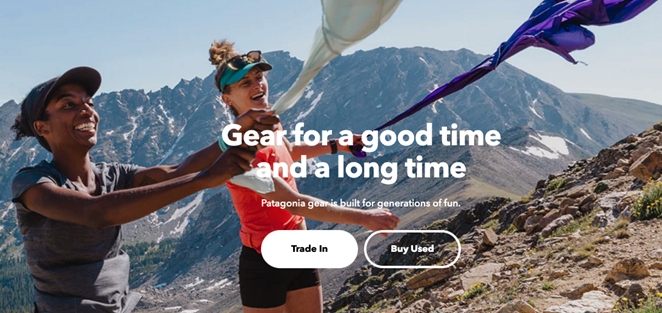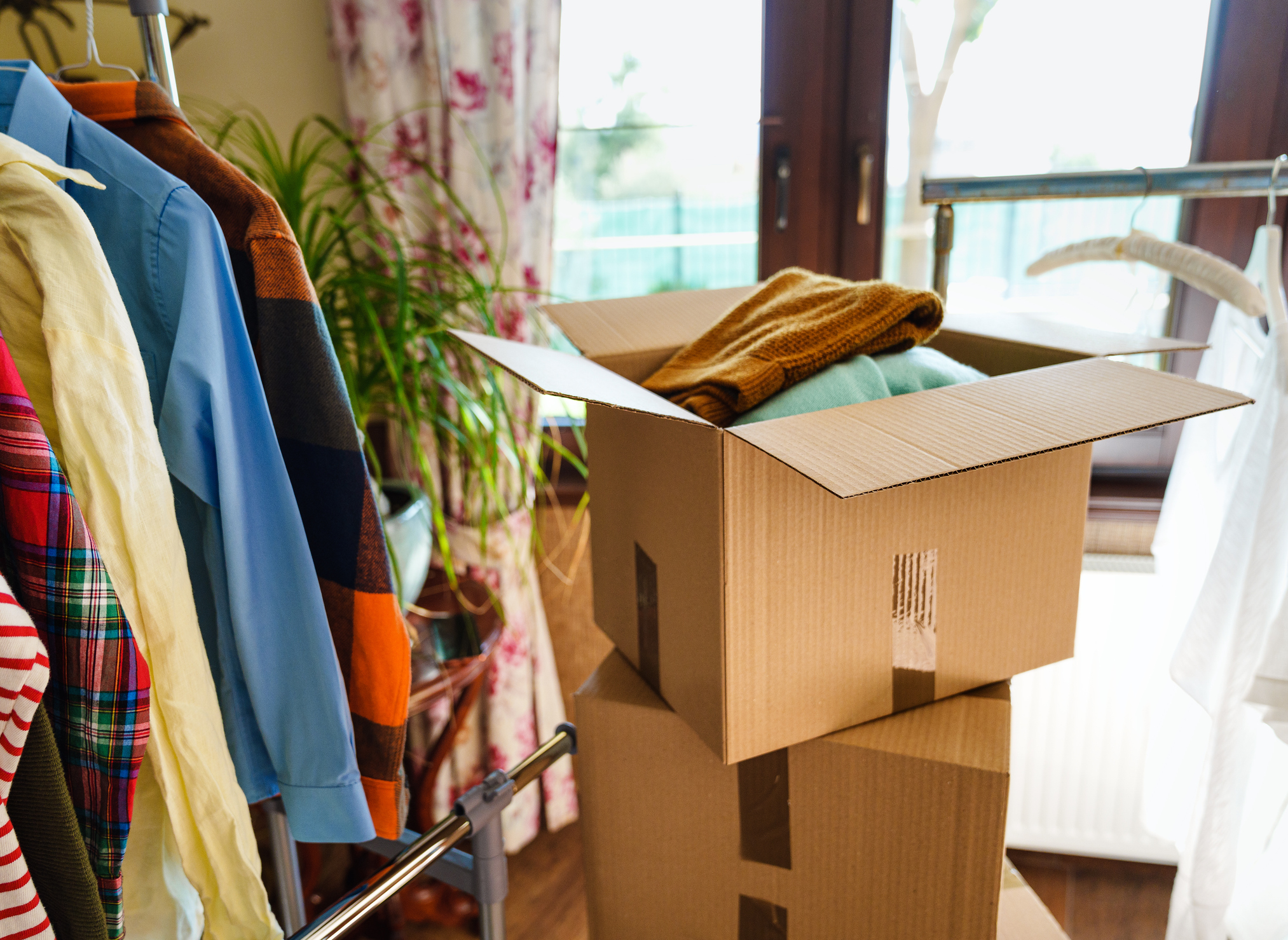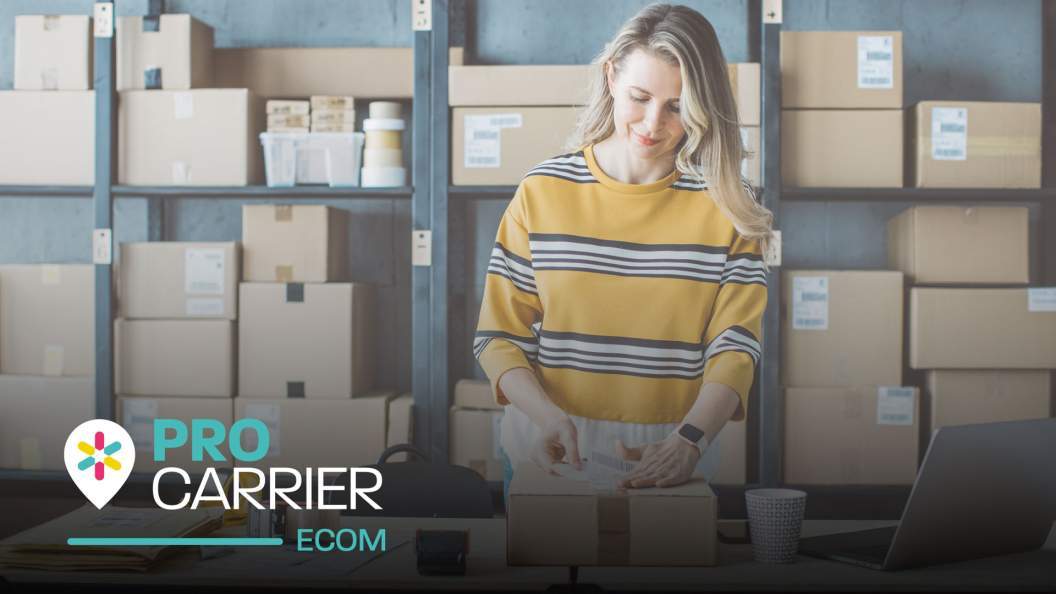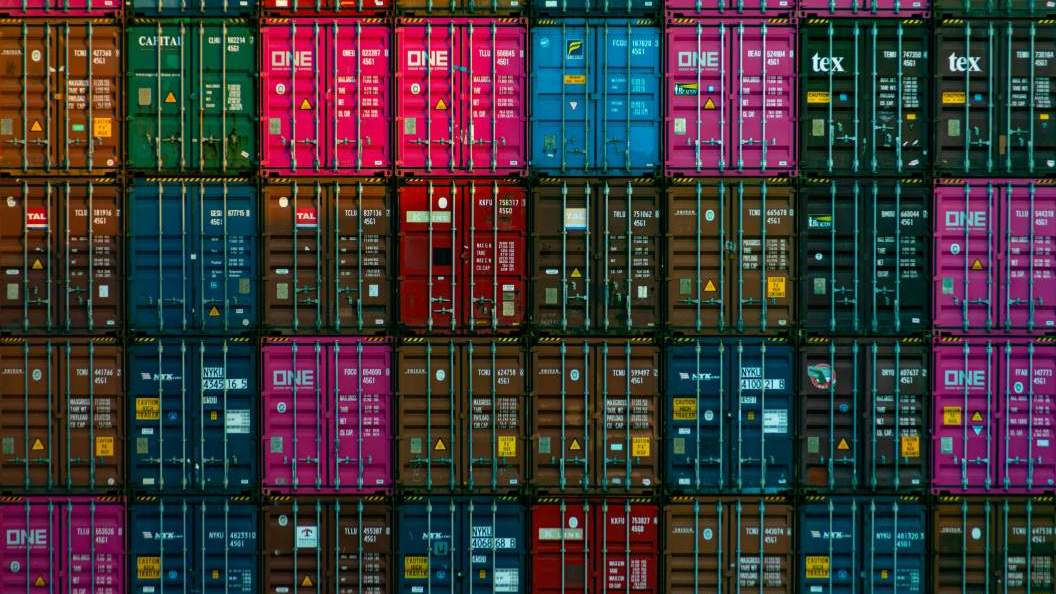From charity shops to vintage stores, DePop to Vinted, the second-hand retail market is booming.
But it’s not just individuals on their smartphones or local retailers in the high street who are cashing in. Well-known brands are launching reCommerce initiatives that allow them to address environmental issues, meet customer expectations, and increase their bottom line.
Want to learn how your store can make a splash in the fast-growing second-hand market? Then read on.
What is reCommerce?
ReCommerce (also known as resale commerce, reverse commerce, and repeat commerce) is a retail concept in which brands sell pre-owned or returned products.
You can resell almost anything as long as it’s in reasonable condition. But most reCommerce retailers focus on the following products:
- Clothes and apparel
- Shoes
- Bags
- Accessories
- Jewellery
- Books
- Electronics
- Homeware
ReCommerce takes many forms. It can be as basic as the charity shop that sells donated clothes, as consumer-orientated as app-based marketplaces like DePop, or as professional as an organised buyback or trade-in program run by a retail brand like Patagonia.

However, don’t think it’s only small or environmentally conscious brands that participate. Even luxury brands are getting in on the action. Balenciaga has a resale programme in the U.S., for example. Others, like Jimmy Choo, partner with third-party resale site The RealReal.
How big is the reCommerce market?
In short, bigger than you think.
Research by MarkNtel Advisors finds that the global reCommerce market could reach a compound annual growth rate (CAGR) of 19.22% between 2023 and 2028.
By 2028, online consignment and thrift store ThredUp predicts the market will reach $350 billion.
In total, the value of all regenerative business models, which includes resale, repair and rental will be €900 billion by 2030, according to the Growth Within Report from the Ellen MacArthur Foundation.
The reCommerce market is particularly popular with millennials and Gen Z. A report by eBay found that 80% of Gen Z and 78% of millennial shoppers had bought a pre-owned item in the previous year, with 64% of Gen Z shoppers saying financial savings is an important reason why they buy second hand.
What are the benefits of reCommerce?
ReCommerce has plenty to offer brands and consumers. Here are some of the biggest benefits to retailers that start their own resale program.
Improve sustainability efforts
Arguably, the biggest benefit of ReCommerce is that it significantly reduces waste and helps brands improve their green credentials.
According to The Circularity Gap Report, the current economy is only 7.2% circular and shrinking year on year. Recommerce can help your products find new homes and stop them from ending up in landfills.
It will also help you meet the sustainability demands of your consumers. Almost two-thirds of retail executives say their customers care about their brand being sustainable, meaning you can boost your reputation and customer loyalty, too.
Meets customer expectations
Consumers, and particularly young shoppers, want to buy second-hand items from brands. It’s not just a matter of shopping supporting brands with strong ESG credentials, customers like being able to purchase items at a discount, too.
In fact, the number one reason consumers shop with a second-hand store like eBay is because products are less expensive.
Launching a reCommerce offering can also open up your brand to new consumers. Research by BCG finds that almost one-half of preowned shoppers have tried a new brand in the past year. It might take just one pre-owned purchase to convert a consumer into a lifelong fan.
Increase revenue
ReCommerce allows retailers to sell returned products they would otherwise have to destroy, profitably get rid of overstocked items, and re-sell pre-owned products customers have already bought.
All three can have a fairly significant impact on your brand’s bottom line — especially given that the reCommerce apparel market is expected to grow three times faster than the overall global apparel market.
You don’t have to spend a lot to acquire pre-owned items, either. A voucher or discount can be enough to encourage consumers to return items they no longer wear.
What are the challenges of reCommerce?
If you’re considering a move into reCommerce, it’s important to understand the challenges your brand may face.
There are two areas in particular that your brand will need to solve: logistics and inventory.
ReCommerce has many moving parts that some brands may need help establishing and managing. These include handling returned items, storing products, refurbishing items, and shipping pre-owned items. A solid returns process is vital to get your goods back from the customer as quickly as possible.
You also need to make sure you have enough high-quality products to sell.
It’s no good launching a new resale section of your online store if it just contains a couple of products, after all. But you also don’t want to be listing hundreds of well-worn items nobody wants to buy. It’s a delicate balancing act, but one that you can solve with a rating system that clearly and objectively defines how pre-owned items are classified.
How can retailers get started with reCommerce?
Have we convinced you of the value of a reCommerce initiative? Then, follow these best practices to make your launch as successful as possible.
Decide what reCommerce will look like for your brand
Start by deciding what reCommerce will look like for your brand.
One option is to list returned products on a website like Vinted. But, because these platforms charge a commission on every sale, costs can quickly add up.
A better way is to integrate reCommerce into your existing online store, making it easy for your customers to find your pre-owned section. This is called branded resale, and it’s a fast-growing trend with 31% year-over-year growth in 2023.
You also need to work out how to encourage customers to return their items. There are three common methods:
- Buybacks: A buyback program gives consumers money to return their products. This can take the form of a cash price or a credit note they can redeem on a purchase.
- Offers: A discount offer, like a percentage off the next purchase, can be all it takes to convince some consumers to send you their items.
- Upcycling: For brands synonymous with sustainability, an upcycling program can encourage customers to return items for free. This works particularly well in the cosmetics industry, where customers return used containers, but it can work in the apparel market, too.
Define why consumers will shop your brand
Next, work out why customers would want to shop your reCommerce offering.
For some brands, this will be easy. Luxury shoppers will almost certainly buy pre-owned items to save money. For brands where sustainability is front and centre, it will be to reduce waste.
The reasons will probably be more nuanced for most brands, but figuring out customer motivations can help you nail your messaging, encourage more customers to return their goods and send more traffic to your reCommerce store.
Establish strict quality controls
You can’t sell any old products in your reCommerce store. Just because consumers want to buy pre-owned items doesn’t mean they’ve stopped caring about product quality.
That’s why you must set strict quality guidelines that govern what customers can return and what buyers can expect.
Patagonia, for example, rates products on a scale from Good to Excellent so everyone is clear on what they can expect.
Refine your delivery and returns processes
A successful reCommerce operation hinges on the quality of your logistics process. So, the final step is to nail your delivery and returns process.
Some brands will have the bandwidth to manage everything in-house, while others will prefer to work with a third party that can handle both delivery and returns through an automated platform. This will allow greater efficiency and scale since your delivery partner can store returned items ready to be resold.
Choosing the right partner will be even more important if you aim to offer your reCommerce products internationally. At Pro Carrier, for example, we offer a Duty Drawback service that lets you automatically recoup duties paid when using both outbound and returns services.
For more information on how to leverage our industry-leading returns service to build a profitable reCommerce offering, speak to one of our experts today.



